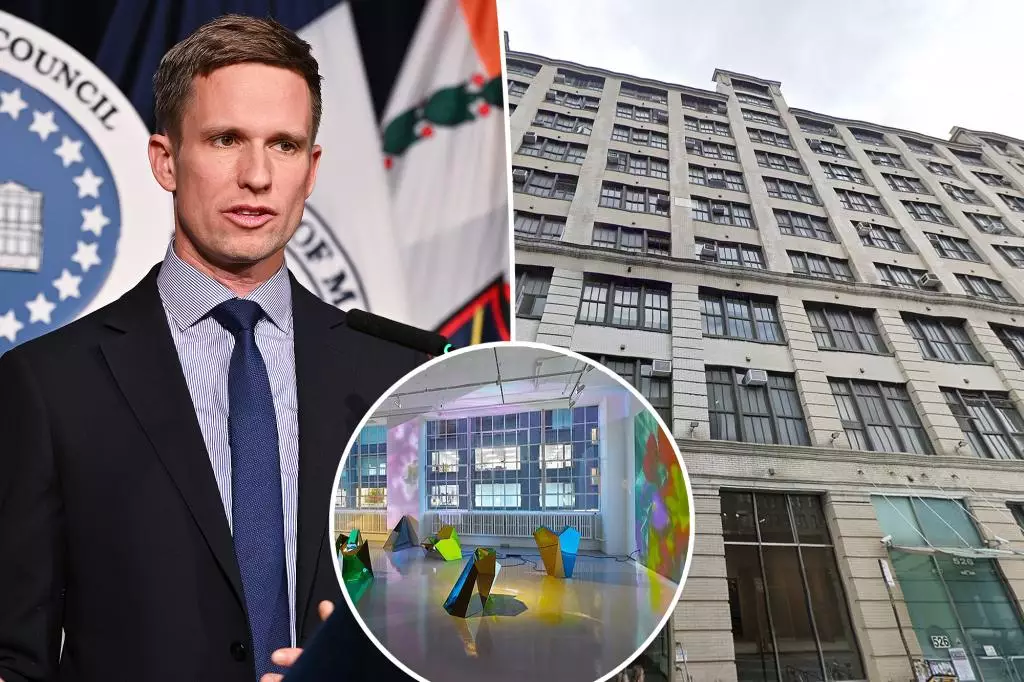The West Chelsea Arts Building, a cherished establishment in New York City’s cultural landscape, is facing a potential shift that could alter its character forever. Since its inception in 1993 by philanthropists Gloria and Raymond Naftali, the building has served as a sanctuary for artists, galleries, and a hub of creativity. Unfortunately, with recent developments following Gloria Naftali’s passing in September 2022, the 400,000-square-foot structure located at 508-534 West 26th Street has been placed on the market for a staggering $170 million by her estate. This sale raises significant concerns among local leaders and artists, prompting widespread advocacy for the preservation of this vital arts hub.
Concern for the future of the West Chelsea Arts Building has prompted an outpouring of support from both local officials and the artistic community. City Council member Erik Bottcher, alongside other political figures such as U.S. Representative Jerry Nadler and State Senator Brad Hoylman-Sigal, have issued a formal letter to the Raymond and Gloria Naftali Foundation. In their correspondence, they emphasized the building’s integral role within the New York artistic community, asserting that its sale poses a significant threat to approximately 200 tenants whose livelihoods and creative practices depend on this space.
The community’s appeal is rooted in a larger narrative: the fear that the sale could spur higher rents or the eviction of tenants, many of whom have cultivated deep connections to the neighborhood. The politically-backed letter highlighted that “Gloria Naftali’s wish” was for the building to retain its character, primarily focusing on housing artist studios and galleries. While the wishes conveyed in her will are non-binding, they reflect a desire to prioritize the arts in an increasingly commercialized landscape.
Firsthand accounts from tenants paint a vivid picture of anxiety and uncertainty regarding the potential sale. Individuals within the arts community have voiced their fears about eviction if the building falls into the hands of a buyer concerned only with profit margins rather than artistic preservation. Bottcher noted the pervasive sentiment among artists: “They are worried that the Naftali Foundation is going to sell this building to the highest bidder with no regard to them.” Such concerns are not unfounded; New York City has historically been a haven for artists, yet the ongoing affordability crisis threatens to dismantle the community that has thrived for centuries.
As the community wages its battle to safeguard this cultural cornerstone, it also navigates a larger question about the future of art and creativity in urban environments. Should a landmark that houses such a diverse and impactful group of artists simply yield to the pressures of the real estate market? Advocates argue that the building must remain an incubator for creativity, free from the burdens of skyrocketing rents and profit-driven motives.
On the other hand, the Naftali estate has expressed a need to let go of the building due to financial constraints. Attorney Derek Wolman stated that the Foundation lacks sufficient funds to maintain the property, thus necessitating the sale to support causes meaningful to the late Gloria Naftali. He assured concerned parties that the transaction would not occur hastily, alleviating some fears regarding immediate displacement. The nature of real estate sales often involves lengthy negotiations and processes, suggesting that there may still be time to address the concerns raised by the community and local officials.
While the legal complexities surrounding the property and its future unfold, one thing remains clear: the West Chelsea Arts Building is a critical node in New York City’s artistic heritage. The fight to maintain its spirit and purpose is emblematic of a broader struggle facing artistic communities everywhere as they confront the challenges posed by gentrification and rising costs. Community leaders and artists are standing firm in their resolve to protect a space that has not only contributed to New York’s cultural fabric but has also provided a home to countless creative minds. As the battle continues, it remains to be seen whether the heart of Chelsea will beat on, unyielding against the tides of change.

Leave a Reply